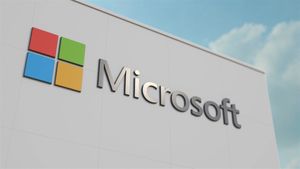Nvidia (NVDA) just delivered another blockbuster quarter, reaffirming its dominance at the center of the AI boom. Yet despite the blowout numbers, a new wave of skepticism has swept across parts of Wall Street. As analysts digest the company’s Q3 results, one particular metric has become a focal point for bearish arguments: Days Sales Outstanding, or DSO — the average number of days it takes a company to collect payment after a credit sale.
It’s an accounting measure that rarely enters the mainstream conversation, but in Nvidia’s case, critics argue that an increase in DSO is a sign of trouble. Some skeptics have gone as far as comparing it to early warning signs seen in major accounting scandals, claiming the rise signals financial irregularities or even hints of fraud. Their argument hinges on whether Nvidia is taking longer to get paid, potentially masking underlying issues in demand.
The claim has been loud enough to spook some investors — especially in a market already sensitive to AI-bubble fears. But does the increase in DSO really signal a red flag for Nvidia? Or is this just another case of bears reaching for a narrative that doesn’t match the fundamentals? Let’s find out!
About Nvidia Stock
Nvidia is a premier technology firm known for its expertise in graphics processing units and artificial intelligence solutions. The company is renowned for its pioneering contributions to gaming, data centers, and AI-driven applications. NVDA’s technological solutions are developed around a platform strategy that combines hardware, systems, software, algorithms, and services to provide distinctive value. The chipmaker has a market cap of $4.32 trillion, making it the world’s most valuable company.
Shares of the AI darling have rallied 35% on a year-to-date basis. NVDA stock began the week on a solid footing, climbing more than 2% on Monday amid reports that President Donald Trump’s administration may allow the company to sell its H200 AI chip to China, with broader market strength adding further support. However, the stock gave up those gains on Tuesday after The Information reported that Meta Platforms (META) was in discussions to spend billions on Google’s (GOOGL) AI chips. Today, the stock is rebounding.

Is Nvidia’s Rising DSO a Reason to Worry?
Nvidia bears have stepped in recently after shares of the AI darling slipped despite the company delivering blowout quarterly results and guidance. And this time, they’re sounding alarms over Nvidia’s increase in Days Sales Outstanding (DSO) — from an average of 46 days in FY2020-2024 to 53 days in Q3 FY26 — arguing that this deterioration signals potential financial irregularities or even fraud. Time to worry or simply tune out the noise?
Well, I think we should start by defining what DSO actually means in accounting and what its implications are. DSO measures how quickly a company collects payment after making a credit sale — an important metric in cash flow management. Calculated by dividing accounts receivable by total credit sales and then multiplying by the number of days in the period, a company’s DSO indicates how efficiently it manages its receivables. Monitoring DSO trends over time can act as an early warning signal for potential problems in a company’s collections process or the creditworthiness of its customers.
In general, a high DSO means the company is selling on credit and taking a long time to collect payments. And this, in theory, can lead to cash flow problems. But did Nvidia face any cash flow issues last quarter? The numbers speak for themselves. The company’s free cash flow surged 64% sequentially to more than $22 billion, its second-highest level on record. BofA analyst Vivek Arya said the metric is key to understanding Nvidia’s true fundamentals.
I doubt that’s convinced the critics yet, so let’s turn our attention to the numerator of the DSO formula — accounts receivable (AR). AR refers to money owed to a business for goods or services it has provided but has not yet been paid for. In Q3, Nvidia’s AR stood at $33.4 billion, up 44.8% year-over-year and 16% sequentially. That’s another issue that bears have been highlighting. However, BofA’s Arya said those concerns are misplaced, arguing that AR should be viewed relative to sales — essentially what the DSO metric already measures — rather than as an absolute figure. And Arya noted that DSO actually “declined to 53 days vs. 54 days QoQ.” So the logical question is: if DSO was even higher in the previous quarter, why didn’t anyone raise red flags then — and why are critics ignoring the fact that it actually improved sequentially?
And if you’re still concerned that Q3 FY26 DSO is higher than the FY2020-2024 average, TF International Securities analyst Ming-Chi Kuo offers a clear explanation. Kuo stated that it’s completely reasonable for DSO to increase when receivables become concentrated among a few large customers. Notably, the share of Nvidia’s receivables tied to major customers jumped from an average of 23.8% in FY2020-2024 to 65% in Q3 FY26. The analyst said the DSO increase reflects the bargaining power of major accounts, especially cloud service providers (CSPs), which have traditionally operated with longer payment terms.
And this brings us to another point where the critics are wrong. They compared Nvidia’s DSO with companies whose primary customers aren’t CSPs. Kuo noted that a more appropriate comparison is suppliers that also serve the same CSPs — such as Arista (ANET), Celestica (CLS), and Vertiv (VRT) — whose DSOs typically exceed 60–70 days. Based on this, he said Nvidia’s 53-day DSO appears completely reasonable, not unusual.
Meanwhile, over the weekend, Nvidia reportedly shared a seven-page memo with Wall Street analysts addressing skeptical investors’ claims. The chipmaker said its DSO was broadly in line with its long-term averages. Nvidia also argued in the memo that the current accusations resemble “historical accounting frauds (Enron, WorldCom, Lucent) that featured vendor financing and SPVs.”
“NVIDIA does not resemble historical accounting frauds because NVIDIA’s underlying business is economically sound, our reporting is complete and transparent, and we care about our reputation for integrity. Unlike Enron, NVIDIA does not use Special Purpose Entities to hide debt and inflate revenue,” the memo said.
What Do Analysts Expect for NVDA Stock?
Despite a recent wave of concerns surrounding Nvidia, from AI-bubble worries and lofty valuations to accounting allegations, Wall Street analysts remain strongly bullish on the company’s growth prospects, as shown by the stock’s top-tier consensus “Strong Buy” rating. It’s worth noting that the company hasn’t received any rating downgrades or price-target cuts following its earnings last week. Instead, a flurry of Wall Street analysts, including those at Citi, JPMorgan, and Morgan Stanley, raised their price targets, and Raymond James resumed coverage of the stock with a “Strong Buy” rating.
Overall, among the 48 analysts covering the stock, 44 rate it a “Strong Buy,” two call it a “Moderate Buy,” one recommends holding, and one assigns a “Strong Sell” rating. The average price target for NVDA stands at $252.33, indicating 39.3% upside potential from current levels.
Putting it all together, I don’t see Nvidia’s DSO as a concern at all. First, when Nvidia is compared to suppliers that serve the same CSPs, its DSO is far lower, making it more than reasonable. Second, the company’s higher DSO versus prior years stems from a greater share of receivables tied to major customers, reflecting those key accounts’ bargaining power rather than any accounting fraud. Third, the DSO figure actually improved sequentially in Q3. With that, I reiterate my “Strong Buy” rating and recommend that investors take advantage of any pullbacks in the stock.

On the date of publication, Oleksandr Pylypenko had a position in: NVDA . All information and data in this article is solely for informational purposes. For more information please view the Barchart Disclosure Policy here.





